BCS Stories
Rethinking sports broadcasting
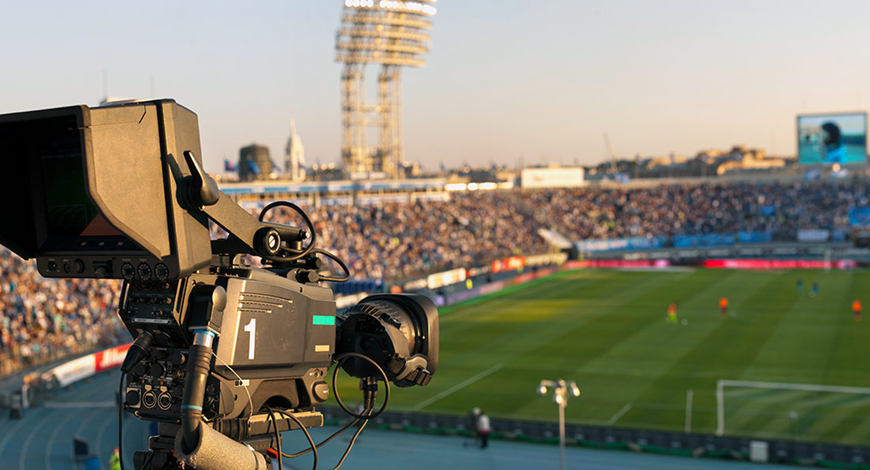
The world of sports suddenly froze in Spring 2020, but the thaw has begun.
First came the titans of European football, then the heroes of American soccer. By August, most franchises were resuming play or planning their upcoming season with coronavirus-related restrictions. And as professional sports leagues gradually return to the ballparks, pitches, and rinks of the world, so too do the sports media professionals tasked with capturing each game.
The sports industry has been mind-blowingly lucrative for decades, with teams earning big bucks from ticket sales, broadcast partnerships, and licensing deals. These three revenue streams have only grown with technology’s rapidly changing evolutions. Entering 2020, the year of the highly anticipated summer Olympics, life in the sports world looked brighter than ever.
When March 2020 rolled around, the sports industry, as well as the world, catapulted into chaos overnight. The multi-billion-dollar Olympics were postponed. The money-maker that is March Madness was cancelled. And, as the COVID-19 tale goes, other teams and leagues followed suit.
And now, everything is different about live sports this year. Sports broadcasters and production teams are finding new ways to adapt to an ever-changing environment. Most prominent and profitable among these changes is the new fan experience.
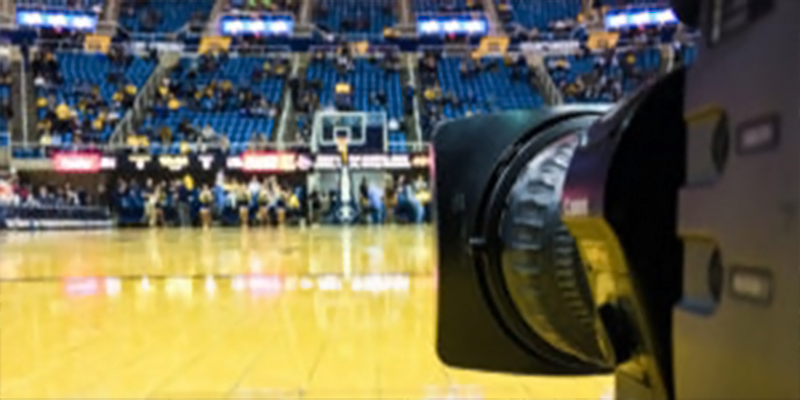
How does the sports industry stay afloat without, well, sports?
The answer was not clear, but leagues and broadcasters experimented widely. ESPN and Fox Sports made classic games and archived content readily available to engage fans. The National Basketball Association (NBA) capitalised on its own esports adaptation, NBA 2K, which had players streaming content from their own homes. And the Naitional Football League (NFL) took sports nostalgia a welcome step further by making every single game since 2009 accessible for streaming via Game Pass, a direct-to-consumer channel priced at around USD 99 per season.
Lucrative or not, experts know these strategies are mere band-aids—and sadly, these band-aids just do not add up. With shortened seasons and no in-person fans, these changes really altered several billion dollars of revenue streams.
As sports leagues and broadcasters enter new territory—a mix of teams playing reduced seasons, and largely (if not entirely) without fans onsite—they are navigating new revenue options to keep a key income driver—fan engagement—alive. Fans lead to advertisement views, and advertisement views lead to potential revenue. It is a tale as old as time in the world of sports advertising. But in 2021 and beyond, that ever-valuable fan experience will look quite different—and despite the bleak circumstances, that may ultimately lead to some long-term positives.
Remote workflows for sports broadcasting
Social distancing guidelines pose unique challenges to media crews covering live events. Broadcasters have to consider not just the on-screen nature of their programming, but the entire sports broadcast workflow behind the scenes as well.
Commentators often have enough room in their broadcast booths to keep a safe social distance from one another. The remainder of the crew, however, may need to make big changes to adhere to social distancing guidelines. The close confinement of a production truck or in-stadium booth can spell trouble for large crews, or small- to medium-sized crews for that matter. If teams do not have access to remote workflow technology, they may be forced to scale back their production. Fortunately, remote workflows have proven successful in sports broadcasting and allowed production teams to carry on with a much smaller and safer in-stadium footprint.
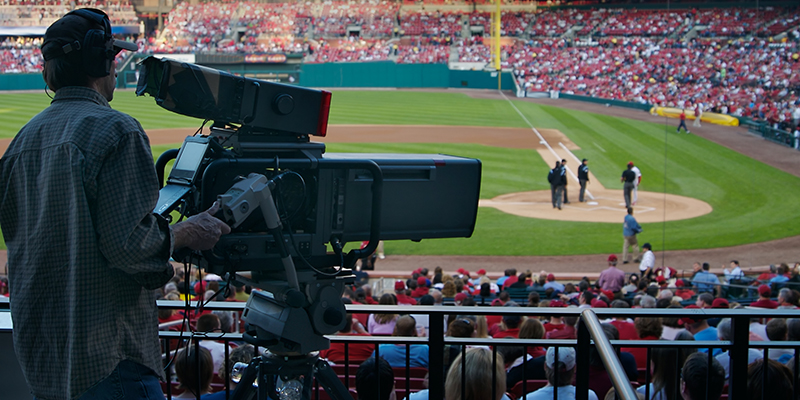
Home studios are the new broadcast sets
As the pandemic and subsequent stay-at-home orders grew, more and more broadcasters turned to home studios instead of in-person broadcast sets for the safety and health of their staff.
Home studios are not only growing in popularity; they are also surprisingly affordable, with just a few essentials like lights, cameras, microphones, and tripods needed for the perfect kit. Even better? Most people do not realise that with traditional mirrorless cameras, one can plug right into the internet with the correct adaptors, then live stream to the masses. So that is an affordable first step for clients creating home-studio kits.
Creative broadcasting solutions
Sports broadcasters are tasked with creative reinvention of the way fans enjoy professional sports. The teams that create the most enjoyable experience for fans watching from home can expect a major competitive advantage.
Digital effects drove creative change in 2020. For example, La Liga used a digital mesh of colors to create a lively crowd effect and add ambience to their television broadcasts. While most of the downtime between innings, plays, and hydration breaks goes to advertising — which plays a huge role in offsetting lost ticket revenue — some breaks in play are too short for advertisements. Replays, game analysis, and digital effects like goal-line technology and golf ball tracking can help an audience feel more in tune with the game and improve their overall viewing experience.
Fans still want to be part of the game, too. Teams, leagues, and networks are trying myriad ways to showcase real fans during live broadcasts. The National Hockey League used large LED screens above the benches to show fans at home and produce novel picture-in-picture moments. Major League Soccer live-streamed fans on the jumbotron and used the stands for supplemental advertising space. Several sports broadcasts have featured cardboard cutouts of fans to fill their would-be sold out seats.
While the verdict is still out on which league, sport, or network got the mix just right, it is clear that creativity and ingenuity to enhance the spectator experience will certainly pay off in the COVID-19 era.
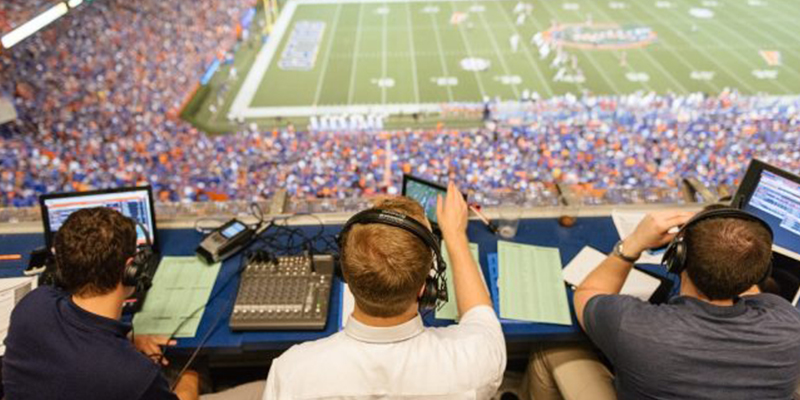
The importance of stadium sound
As the industry works through this tedious trial and error, one thing has become crystal clear: sound matters.
Most professional sports leagues are sourcing stadium audio from game developers like Electronic Arts and Sony Interactive Entertainment. Both have built massive libraries of authentic game audio for their sports simulators that work great for live sports broadcasting as well.
Stadium sound is not only affecting the audience. It is impacting the game itself. When the US returned to soccer, referees were reminded that the sound of player-to-player contact should not affect their calls, as both the sound of impact and player reactions will be amplified in a fanless stadium. In baseball, the subtle squeak in the catcher’s shoes as he repositions for a pitch — something hitters cannot typically hear in a packed stadium — may now be affecting the hitter’s decision to swing at an outside pitch.
While there likely would not be a solution to these on-the-pitch sound effects until fans can once again return to stadiums, broadcast and sports production teams can superimpose sound with high-quality crowd audio for a better at-home experience.
Better workflows start with being organized
Building a successful remote workflow for sports broadcasting requires a storage infrastructure that can handle live VFX, additional graphics, and expanded audio libraries, as well as the ability for members to access live footage to preview, edit, and playback from remote locations.
Media asset management (MAM) is gaining importance as well. In the absence of a full schedule of live games, highlight reels have become a lifeline for teams, leagues, and networks with little other content to distribute to their sports-starved audiences. The better organized and more accessible these clips are, the more potential they have to add to the program’s success.
For a remote workflow to be successful in this new broadcast environment, production teams need remote access to their media and their MAM at all times, both during live broadcasts and for post-production and syndication thereafter.
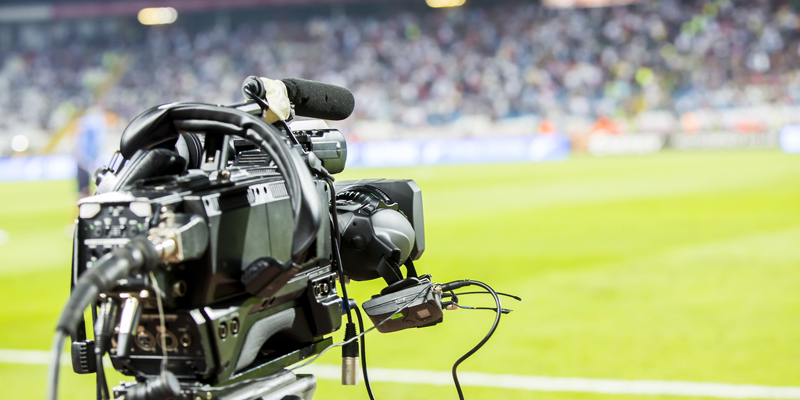
Using live streams to recreate the fan experience
Live streaming is not a new idea in the world of sports, but it is taking a new shape, and priority, as leagues and broadcasters brainstorm new revenue options. In the past, live streaming was an enhancement of the broadcast. It was there, but more so as an extra stream of revenue. Now what they are going to have to do is make it more readily available. They’ll need to improve upon it, make sure it is top-notch quality, and perhaps even bite the bullet by not focusing solely on revenue stream, but also perfecting the fan experience in this new virtual sports environment.
Services like Pixellot have further expanded the options for sports broadcasting. No longer do you need a full crew or production team; the service allows for inexpensive live coverage for seamless streaming.
While multiple tech options make live streaming easier than ever, PTZ cameras—cameras that pan, tilt and zoom via remote controls—are flying off the shelves and saving big bucks across the industry. The only thing is, these cameras do not have the same quality calibre of a traditional broadcast, because traditional broadcast cameras are very high-spec. That is a trade-off which broadcasters adapt to engage fans while staying within tight budgets.
A new way forward
Like it or not, the pandemic shows no signs of letting up. That means sports seasons may be shorter, games will inevitably be cancelled and content quantity—the bread and butter of the sports industry—will continue getting reduced. Except, it does not have to.
From esports adaptations to live streams left and right, the sports industry has already shown its prowess when it comes to content creativity. Now, it is time to monetize as the rest of the pandemic shakes out.
The sports broadcast industry — largely without work for months due to postponed and cancelled seasons — has been ramping up to an exciting end of the year. As teams, leagues, and networks all battle the continued threat of delayed seasons, broadcasters and production teams are doing their part to get us back in the game. That means more creativity with simulated crowd noise and digital fan overlays, new remote and hybrid workflows, and uncomfortable but necessary change.
Whatever the new way forward is for sports video team, remote workflow technology is at the top of its game, and the industry is ready to play ball.








You must be logged in to post a comment Login